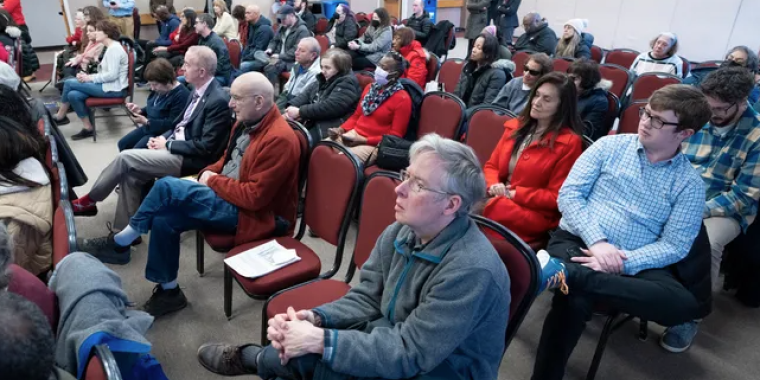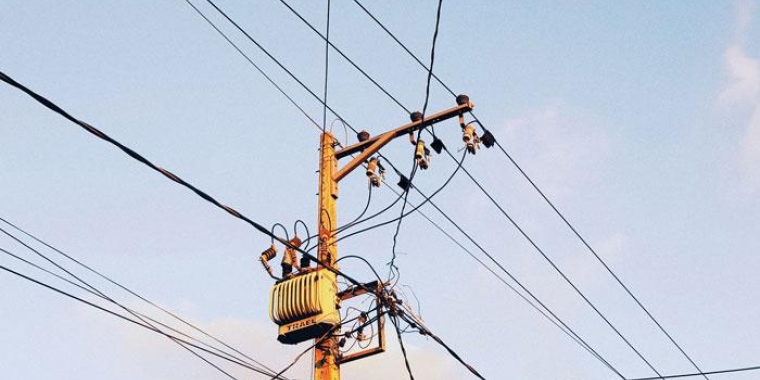
1.3M New Yorkers are behind on electric, gas bills. What's next for them?

More than 17,400 Orange and Rockland Utility customers were at least two months behind on their bills in January and another 12,400 were notified their service would be shut off. Together they owe more than $32 million.
It’s even worse at Con Edison, the state’s largest gas and electric utility with 9 million customers in New York City and Westchester County.
As of January, about 440,000 residential customers were behind at least two months on their bills and another 127,115 received termination notices. Together they owe more than $1 billion, easily the highest total for any of the state’s utilities, according to figures reported to the state Public Service Commission.
To Bill Ferris, the state legislative director for the AARP, which monitors utility costs for their impact on New York’s older population, those are disturbing totals. “I haven’t seen these sorts of numbers since the pandemic,” Ferris said.
During the spring of 2022, the arrears total for gas and electric utilities across the state surged to $2.3 billion, leading to the largest debt-forgiveness program in state history in 2023.
The arrears total in December stood at $1.85 billion from more than 1.3 million household customers behind at least two months. That’s less than it was during the height of the pandemic, but higher than the $1.66 billion owed from March 2024.
“The PSC data is proof positive that New York has an energy affordability problem,” Ferris says.
Ratepayers across NY are angry
Ratepayer frustration has mounted in recent months as one of the coldest winters in recent years led to higher heating costs. Inflation, cost-of-living increases and housing costs are all contributing to pressure on household expenses, making it harder to keep up with monthly payments.
Add to that Con Edison’s January announcement that it’s seeking double-digit rate hikes — 11.4% for electric and 13.3% for gas — that would start in January 2026. The news had Gov. Kathy Hochul and state lawmakers calling on the state’s Public Service Commission to reject Con Edison’s proposal.
Ratepayers have been flooding the state with complaints and turning out at public hearings across Lower Hudson Valley to vent their anger, scenes that have played out across the state in recent years.
The Journal News/lohud.com asked readers to share their experiences with high utility bills in the Hudson Valley in recent weeks; close to 400 readers have submitted stories so far.
Double-digit rate hikes at utilities across the state, coupled with billing fiascoes, have some state lawmakers advocating public takeover of utilities from Long Island to Rochester.
Con Edison said it needs to invest $21 billion over three years to pay for infrastructure upgrades, among them grid enhancements to meet increased demand as more customers turn to electric vehicles and heat pumps. They also have plans to replace steel and cast-iron mains with plastic piping to reduce methane gas emissions.
And they’ll need to replace overhead wires with more resilient cable as well as underground cable that can withstand higher temperatures caused by climate change.
The AARP and the Public Utility Law Project, a nonprofit advocacy group, agree that the transition to a greener grid and climate resilience are worthwhile goals. But, they say, ratepayers shouldn’t be stuck with the full tab.
“Ratepayers are not an ATM machine for utilities to comply with a state law,” Ferris said.
What's behind the high utility costs? Utility bills are hitting Lower Hudson Valley residents hard. Why are they so high?
State relief for ratepayers behind on utility bills in NY?
Both groups are pushing the state to include hundreds of millions of dollars in ratepayer relief measures during state budget negotiations taking place this month.
Topping the list is a request for $200 million to expand energy affordability programs for low-income households through monthly utility bill credits. They also want residential customers who may not qualify as low income but whose income is below the state’s median to be eligible for bill credits.
They want $550 million for cooling cash assistance, which provides air conditioners to eligible households as well as bill relief for what customers pay to use them. And they’re asking the state to fund an annual study of the impact that clean energy programs are having on ratepayers.
Last year, the state appropriated $200 million for bill credits to utility customers. And in 2023, the PSC leveraged $250 million in state funding for $1 billion in relief for customers who fell behind during the pandemic.
And the PSA is working with utilities on ways to expand automatic enrollment for energy affordability programs.
All that hasn’t quieted frustrated state lawmakers.
State Senate Majority Leader Andrea Stewart-Cousins, whose district includes Yonkers, Greenburgh and Mount Pleasant, this week joined Hochul in urging the PSC to reject ConEd’s request.
“This was the latest increase which the PSC has granted ConEd on a yearly basis for at least the past 6 years,” she wrote. “It is time to change the game. ConEd’s delivery rates are too high now; to increase them further increases the burden on the public.”
Con Ed: If bills aren't paid, it hurts other customers
ConEd stopped collecting from customers who got behind on their bills during the pandemic. But since then, despite the state’s bill forgiveness program and flexible payment plans, “customer debt has increased significantly,” ConEd spokesman Allan Drury said.
In 2020, the utility’s arrears were $400 million. At the start of this year, that number had nearly quadrupled to $1.5 billion, a tally that includes residential and commercial customers. As of this month the total was down to $1.4 billion owed by 410,000 residential customers and another 60,000 commercial.
The company offers payment plans that allow customers to pay off their bills over time. “When customers do not pay their bills, it means that more costs are borne by other customers,” Drury said. “This is why we have stepped up collection efforts.”
Last year the utility provided $300 million in bill discounts to customers who qualified for the state’s energy affordability program.
